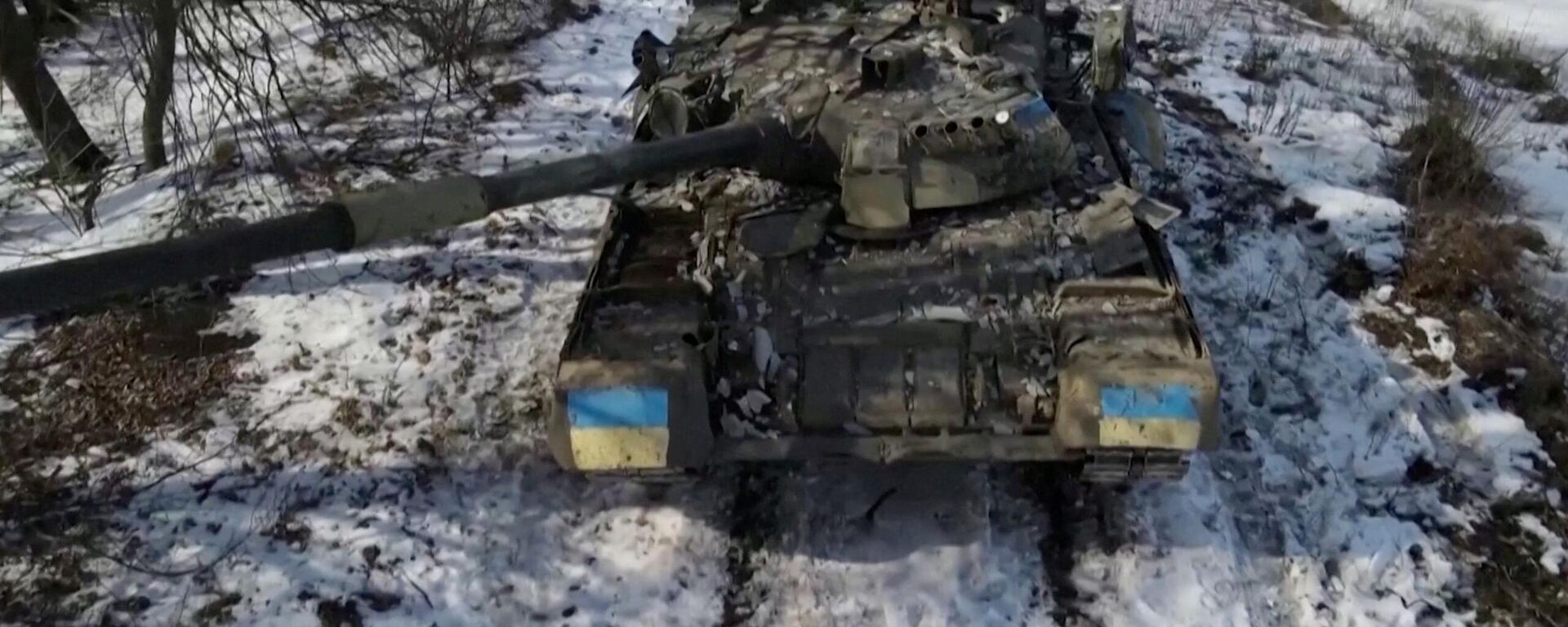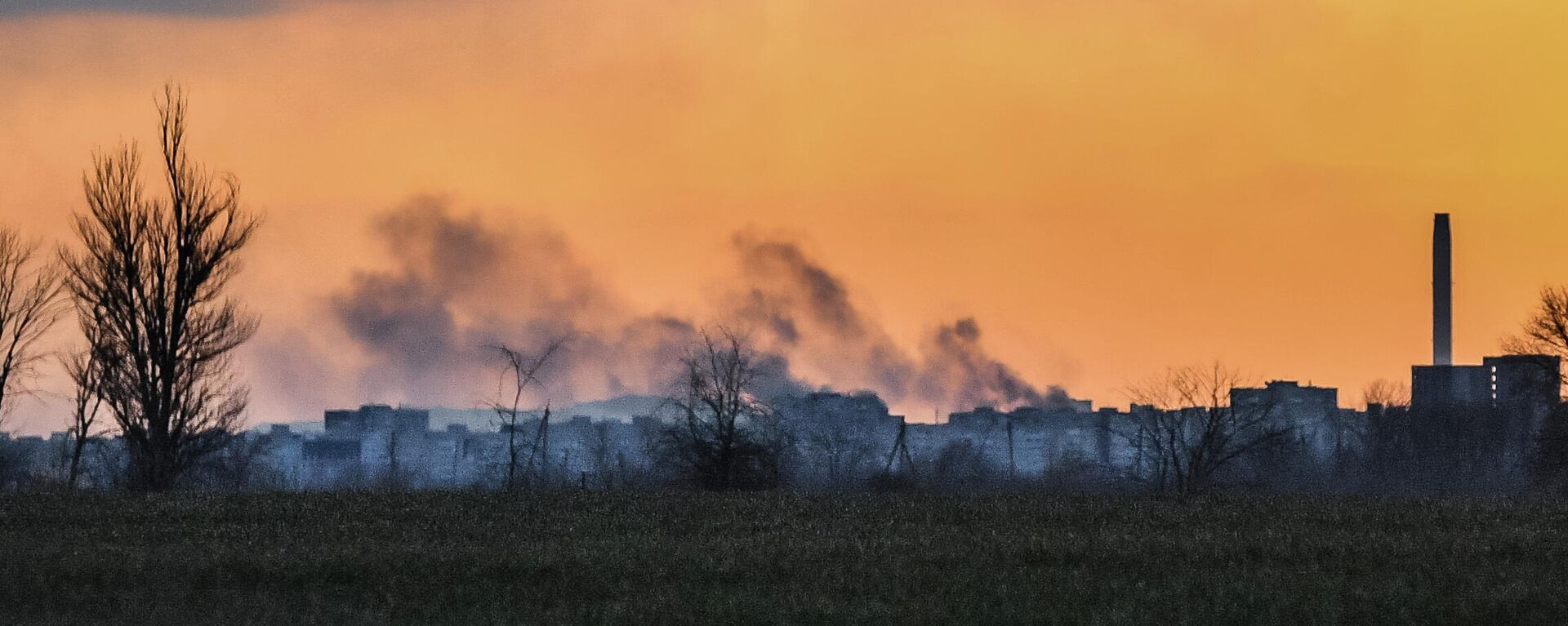https://sputnikglobe.com/20220408/radio-communications-indicate-significant-numbers-of-foreign-mercs-stuck-in-mariupol-russian-mod-1094598098.html
Radio Communications Indicate 'Significant Numbers' of Foreign Mercs Stuck in Mariupol: Russian MoD
Radio Communications Indicate 'Significant Numbers' of Foreign Mercs Stuck in Mariupol: Russian MoD
Sputnik International
The joint Russian military-Donetsk People's Militia operation to free the Azov Sea-adjacent city of Mariupol has turned into one of the toughest slogs of the... 08.04.2022, Sputnik International
2022-04-08T17:06+0000
2022-04-08T17:06+0000
2022-04-08T17:58+0000
mariupol
https://cdn1.img.sputnikglobe.com/img/07e6/04/08/1094598681_0:110:3249:1938_1920x0_80_0_0_472a5d80f48edc02f21f9eb880f8c501.jpg
Significant numbers of foreign mercenaries are active in those areas of Mariupol which remain under Ukrainian control, Russian Ministry of Defence spokesman Igor Konashenkov has reported."In addition to Ukrainian and Russian, radio communications are being carried out in six other mainly European foreign languages," the officer said.The officer also noted that Kiev's refusal to entertain withdraw its forces from Mariupol, leave no other option except for DPR People's Militia and the Russian military to fully clear the city.On 4 April, the Russian MoD called on the remaining Ukrainian military units trapped in Mariupol to "lay down their arms" and evacuate along the humanitarian corridor agreed to with the Ukrainian side in the direction of Zaporozhye to areas controlled by Kiev, promising to guarantee their safety. The next day, the MoD reported that the Ukrainian side rejected the proposal.Situated on the northern coast of the Sea of Azov, Mariupol is one of Ukraine's largest commercial seaports. Over 400,000 people lived in the city on the eve of the Russian-led military operation. As of 21 March, the Russian MoD said that over 130,000 civilians remained in the city, with many blocked from leaving by the Ukrainian side or shot at by Azov fighters as they attempted to escape.The DPR announced Thursday that central Mariupol had been fully cleared of Ukrainian forces. Areas of the coastal Prymorskyi district and the northern Kalmiuskyi district remained under Ukrainian control as of Friday, as did Azovstal, a massive Soviet-built iron and steel works controlled by Ukrainian oligarch Rinat Akhmetov. Over 3,500 Ukrainian troops as well as about 800 Azov Regiment troops were trapped in Mariupol after the city was completely surrounded on 1 March. Turning areas under their control into fortresses and using residential neighbourhoods as defence points, these forces have fought Donetsk People's Militia and Russian forces block by block, apartment building by apartment building, with many of them containing civilians deprived of food, water, electricity and the ability to communicate with the outside world.Late last month, the Russian General Staff estimated that about 6,600 foreign mercenaries and terrorists hailing from 62 countries are operating in Ukraine. The General Staff warned that the rules of warfare do not apply to mercenaries and that they would be "ruthlessly destroyed."
https://sputnikglobe.com/20220402/live-updates-president-of-south-ossetia-plans-to-visit-donbass-1094412451.html
https://sputnikglobe.com/20220405/ukrainian-militants-plan-to-kill-witnesses-to-their-crimes-in-mariupol---dpr-authorities-1094511380.html
mariupol
Sputnik International
feedback@sputniknews.com
+74956456601
MIA „Rossiya Segodnya“
2022
News
en_EN
Sputnik International
feedback@sputniknews.com
+74956456601
MIA „Rossiya Segodnya“
Sputnik International
feedback@sputniknews.com
+74956456601
MIA „Rossiya Segodnya“
mariupol
Radio Communications Indicate 'Significant Numbers' of Foreign Mercs Stuck in Mariupol: Russian MoD
17:06 GMT 08.04.2022 (Updated: 17:58 GMT 08.04.2022) The joint Russian military-Donetsk People's Militia operation to free the Azov Sea-adjacent city of Mariupol has turned into one of the toughest slogs of the campaign in Ukraine, with Ukrainian military and neo-Nazi Azov units setting up defences inside the city, taking civilians hostage, and turning the battle into a brutal house-by-house fight.
Significant numbers of foreign mercenaries are active in those areas of Mariupol which remain under Ukrainian control, Russian Ministry of Defence spokesman Igor Konashenkov has reported.
"The joint operation of the troops of the Donetsk People's Republic and units of the Russian armed forces to liberate the city of Mariupol continues. The results of an analysis of radio intercepts show that in addition to neo-Nazi elements from the Azov regiment and the remnants of the Ukrainian armed forces, a significant number of foreign mercenaries are located in the occupied areas of the city," Konashenkov said in a briefing Friday evening.
"In addition to Ukrainian and Russian, radio communications are being carried out in six other mainly European foreign languages," the officer said.
Konashenkov stressed that the wretched forces trapped in Mariupol are not the celebrated "defenders of so-called European values, but foreign mercenaries, who have come here to kill Slavs for American dollars while hiding behind a human shield of civilians."
The officer also noted that Kiev's refusal to entertain withdraw its forces from Mariupol, leave no other option except for DPR People's Militia and the Russian military to fully clear the city.
On 4 April, the Russian MoD called on the remaining Ukrainian military units trapped in Mariupol to "lay down their arms" and evacuate along the humanitarian corridor agreed to with the Ukrainian side in the direction of Zaporozhye to areas controlled by Kiev, promising to guarantee their safety. The next day, the MoD reported that the Ukrainian side rejected the proposal.
Situated on the northern coast of the Sea of Azov, Mariupol is one of Ukraine's largest commercial seaports. Over 400,000 people lived in the city on the eve of the Russian-led military operation. As of 21 March, the Russian MoD said that over 130,000 civilians remained in the city, with many blocked from leaving by the Ukrainian side or shot at by Azov fighters as they attempted to escape.
The DPR announced Thursday that central Mariupol had been fully cleared of Ukrainian forces. Areas of the coastal Prymorskyi district and the northern Kalmiuskyi district remained under Ukrainian control as of Friday, as did Azovstal, a massive Soviet-built iron and steel works controlled by Ukrainian oligarch Rinat Akhmetov.
Over 3,500 Ukrainian troops as well as about 800 Azov Regiment troops were trapped in Mariupol after the city was completely surrounded on 1 March. Turning areas under their control into fortresses and using residential neighbourhoods as defence points, these forces have fought Donetsk People's Militia and Russian forces block by block, apartment building by apartment building, with many of them containing civilians deprived of food, water, electricity and the ability to communicate with the outside world.
Late last month, the Russian General Staff
estimated that about 6,600 foreign mercenaries and terrorists hailing from 62 countries are operating in Ukraine. The General Staff warned that the rules of warfare do not apply to mercenaries and that they would be "ruthlessly destroyed."





